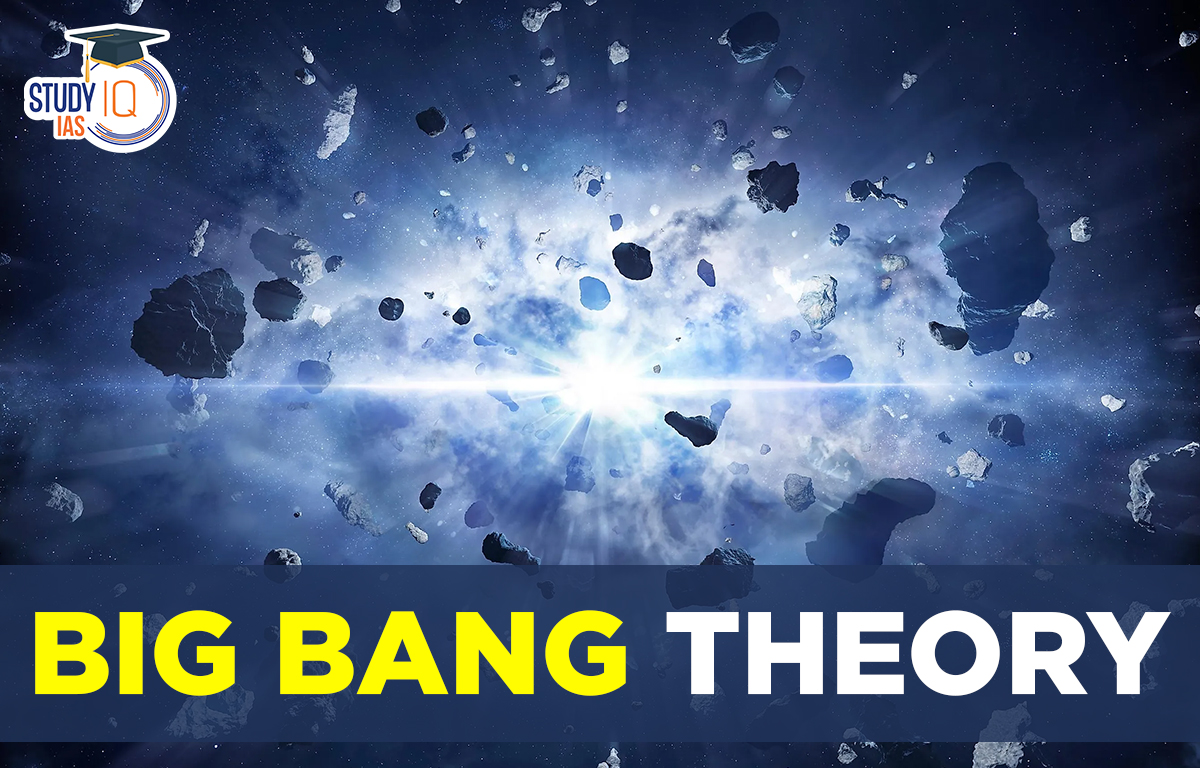Table of Contents
Big Bang Theory
The Big Bang is the most popular idea about how the universe started, about 13.8 billion years ago. It began as a tiny super-dense point called a “singularity.” This point suddenly expanded and exploded making the universe grow very quickly. In the first few seconds after the Big Bang, the universe expanded really fast, and the first atoms formed in just 3 minutes. After about 300000 years, the temperature cooled down enough for light to travel freely which led to the formation of stars and planets. The universe has been expanding ever since, and scientists believe a mysterious force called “dark energy” is causing this growth, but they still don’t know exactly what it is.
Strong evidence for the Big Bang Theory includes:
- Most galaxies are redshifted, indicating they are moving away and the universe is expanding.
- The CMB is low-level radiation left over from the Big Bang, measured at a temperature of 2.725 K.
- The amounts of light elements like hydrogen and helium support the idea that the universe began in a hot, dense state.
Before The Big Bang
No one knows what the universe was like in the very beginning. The best theory we have, called the “inflationary universe” model, suggests that space was filled with a very concentrated unstable energy that turned into matter during the Big Bang. But we still don’t know how space and time started.
First Few Minutes to Next Thousand Years
After the universe expanded it cooled enough for subatomic particles like photons, electrons, protons, and neutrons to form. Simple atomic nuclei appeared within three minutes of the Big Bang, but it took thousands of years for the first neutral atoms to form. Most of these atoms are hydrogen, with small amounts of helium and lithium.
Earlier vs Later Universe
Early Universe was Opaque:
Right after the Big Bang, the universe was filled with free electrons that scattered light, making it opaque, like sunlight in clouds.
Later Universe became Transparent:
As the universe cooled, electrons combined with nuclei to form neutral atoms, allowing light to travel freely. This transition made the universe transparent, and the light from that time is now seen as Cosmic Background Radiation.
The Big Bang Theories and Evidence
Some evidence helps us ascertain that the universe did have a beginning, and the Big Bang happened.
1. Red Shift and Expanding of Galaxies
In 1929, Edwin Hubble discovered that galaxies outside our Milky Way are moving away from us faster the farther they are. This led him to conclude that the universe was once a single point, created in a big event called the “Big Bang,” about 14 billion years ago. One important evidence is called the Red Shift, which Hubble observed. It shows that light from distant galaxies shifts to red as they move away, indicating that the universe is expanding. This happens because as light travels longer distances, its wavelength changes, making it appear redder.
2. Heat Left by the Big Bang
The second important piece of evidence is the heat left by the Big Bang. If the universe was initially extremely hot, as the Big Bang suggests, we should be able to find some heat signature of this event. In 1960, scientists discovered the “Cosmic Microwave Background Radiation” coming from the farthest reaches of the Universe.
3. Cosmic Background Explorer (COBE) Missions
NASA has launched two missions to study cosmic background radiation, taking “baby pictures” of the Universe only 400000 years after it was born. The Cosmic Background Explorer was the first of these (COBE).
The Big Bang Missions to Study
1. Wilkinson Microware Anisotropy Probe (WMAP)
The Wilkinson Microwave Anisotropy Probe (WMAP) was the second mission to study cosmic background radiation. It looked at the whole sky with much better detail than the earlier COBE mission, measuring tiny temperature differences in microwave radiation that is evenly spread across the universe.
By using this data with models of the universe, scientists have found that the universe is “flat.” This means that on a large scale, the rules of regular geometry apply, like parallel lines never meeting and the ratio of a circle’s circumference to its diameter being pi.
2. Planck
In 2009, the European Space Agency launched Planck, a third mission with significant participation from NASA. Planck is creating the most precise maps of microwave background radiation to date. It measures the fluctuations of the temperature of the CMB with an accuracy set by fundamental astrophysical limits, using instruments sensitive to temperature variations of a few millionths of a degree and mapping the entire sky over 9 wavelength bands.
Big Bang Theory UPSC
Cosmic Microwave Radiation is a faint glow of light present in the Universe. It falls on Earth from every direction with uniform intensity. The light arises from the heat radiation. The heat is supposed to be left over from the Big Bang event. This light is invisible to the naked eye. It was discovered in 1965 by American radio astronomers Arno Penzias and Robert Wilson.
The Big Bang Theory is critical concept for the UPSC science and technology section. Both Indian and global scientists are conducting extensive research in this field to determine how the universe began billions of years ago. In this article, you will learn about the various views of the origin of the earth in a nutshell in preparation for the UPSC IAS exam.


 Story of Meera Bai and Her Devotion For ...
Story of Meera Bai and Her Devotion For ...
 Desert Climate, Distribution, Climatic C...
Desert Climate, Distribution, Climatic C...
 Deserts of India Map, Features of Thar D...
Deserts of India Map, Features of Thar D...





















